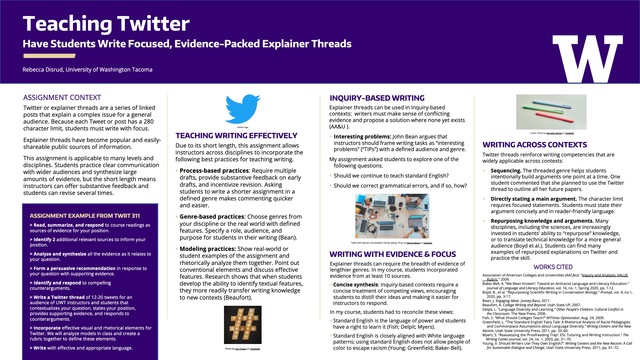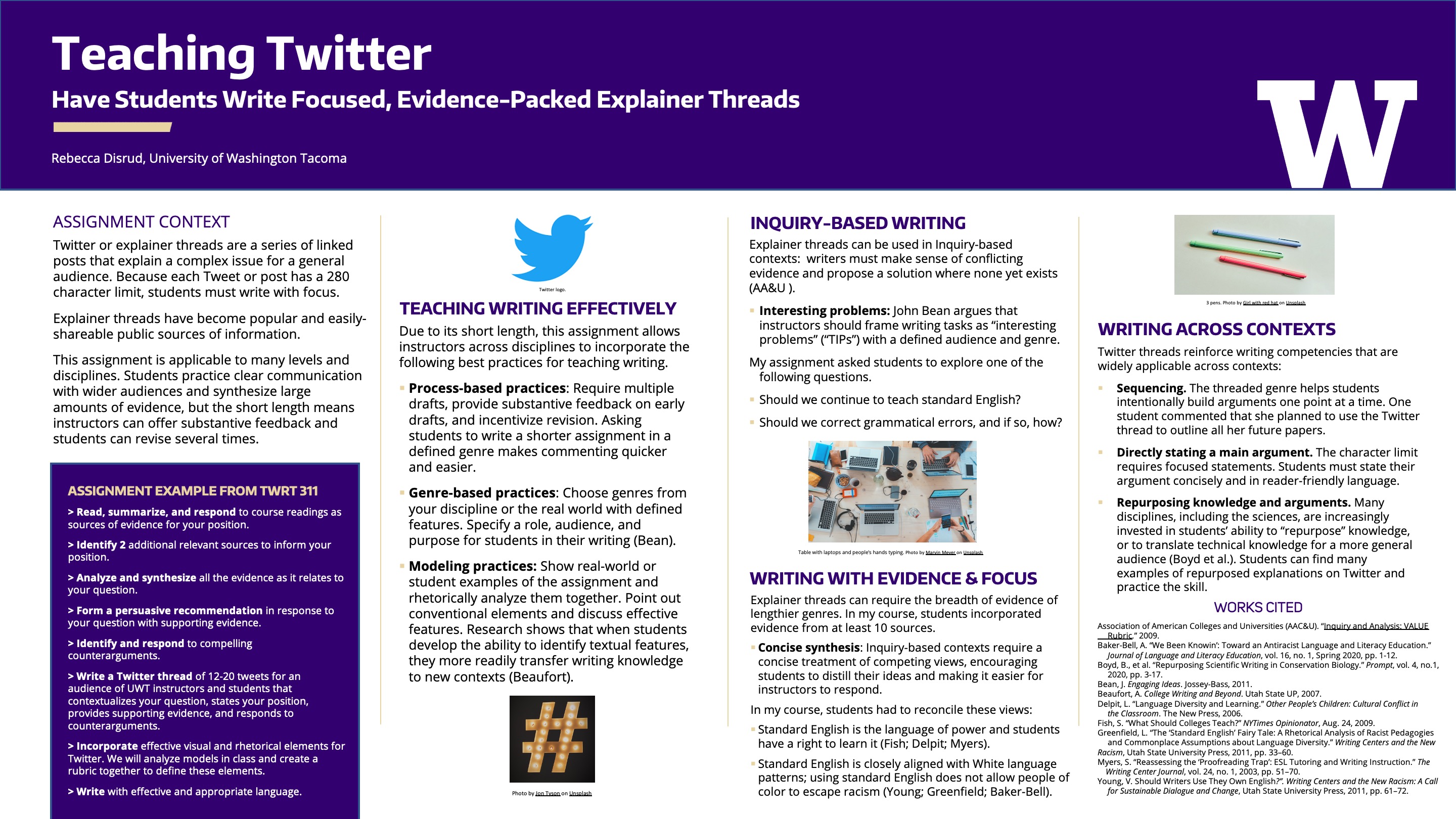Skip to main contentResource added 
This presentation describes a writing assignment on composing Twitter explainer threads that I developed for an upper-division writing studies class. Twitter explainer threads, which are series of connected Tweets that explain a complex problem or mount a sequenced argument, are adaptable to many disciplines and writing contexts, particularly to inquiry-based contexts. In teaching explainer threads as a quarter-long collaborative writing assignment, I found that the constraints of the Twitter thread genre helped students to explicitly do several things that they often struggled with in research papers: succinctly synthesize academic evidence, concisely state their main argument, sequence their reasons, rebut counterarguments, and keep the reader’s interest. These skills translate widely to other writing contexts, including academic genres. Moreover, because of the relatively short length of the assignment, I was able to provide two rounds of substantive feedback on their drafts, which students used to significantly revise their arguments.
In short, Twitter explainer threads realize many best practices for teaching writing, including having students engage in open-ended academic inquiry, identify rhetorical features that are either unique to a genre or widely transferrable, and incorporate expert feedback in revision of drafts.
Teaching Twitter: Have Students Write Focused, Evidence-Packed Explainer Threads

Full description
Video Presentation
Author:
Rebecca Disrud, UWT Teaching and Learning Center, UW TacomaAbstract:
Many instructors want their students to be able to clearly communicate academic research to wider audiences, yet relatively few courses include assignments that allow students to practice public writing. At the same time, most instructors know that students improve as writers through opportunities to incorporate expert feedback and to substantively revise written drafts, yet many of us have limited time to offer extensive feedback to students.This presentation describes a writing assignment on composing Twitter explainer threads that I developed for an upper-division writing studies class. Twitter explainer threads, which are series of connected Tweets that explain a complex problem or mount a sequenced argument, are adaptable to many disciplines and writing contexts, particularly to inquiry-based contexts. In teaching explainer threads as a quarter-long collaborative writing assignment, I found that the constraints of the Twitter thread genre helped students to explicitly do several things that they often struggled with in research papers: succinctly synthesize academic evidence, concisely state their main argument, sequence their reasons, rebut counterarguments, and keep the reader’s interest. These skills translate widely to other writing contexts, including academic genres. Moreover, because of the relatively short length of the assignment, I was able to provide two rounds of substantive feedback on their drafts, which students used to significantly revise their arguments.
In short, Twitter explainer threads realize many best practices for teaching writing, including having students engage in open-ended academic inquiry, identify rhetorical features that are either unique to a genre or widely transferrable, and incorporate expert feedback in revision of drafts.
Poster PDF
View a PDF version of the poster in Google Drive to enlarge the image or download a copy.
Comments
The presenter for this poster will be available to respond to comments during Poster Session 2 on April 20, 3:45-4:30 p.m.Comments
to view and add comments.
Annotations
No one has annotated a text with this resource yet.
- typeImage
- created on
- file formatjpg
- file size1 MB
- publisherUniversity of Washington
- rights
Downloadable variants:


